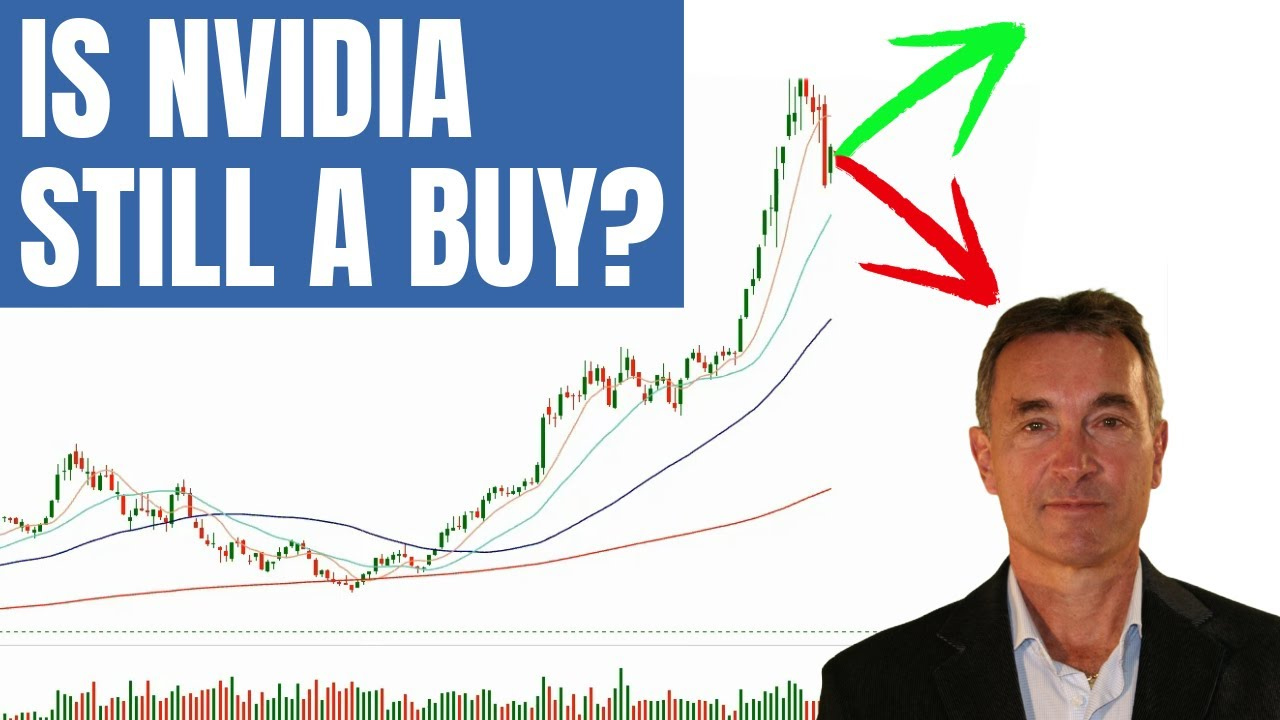As the technology sector continues to grow and innovate, a few companies like Nvidia Corporation (NVDA have captured investor interest). A leader in graphics processing units (GPUs), AI (artificial intelligence) hardware, and data centres, Nvidia’s influence has expanded beyond gaming, making it a stock many investors are eager to evaluate. But is Nvidia a buy? In this article, we will explore the key factors influencing Nvidia’s stock performance, including its market outlook, growth prospects, competitive advantages, and the risks associated with investing in Nvidia.
Nvidia: A Brief Overview
Founded in 1993, Nvidia has grown into one of the most influential companies in the tech industry. Initially known for its GPUs that powered personal computers and video game consoles, Nvidia has become a key player in multiple high-growth areas. The company now focuses on various sectors such as gaming, data centres, automotive, artificial intelligence, and cryptocurrency mining.
Nvidia’s leadership in the GPU market is undisputed. Its products are used in everything from gaming consoles and personal computers to supercomputers and cloud data centres. As gaming, cloud computing, AI, and machine learning technologies have grown in importance, Nvidia has positioned itself as the go-to provider for these industries.
The company has experienced strong growth, with a track record of impressive revenue increases and robust market share. Nvidia’s dominance in the GPU sector, particularly with its GeForce and Quadro product lines, positions it well for long-term success.
The Bullish Case for Nvidia
Dominance in the Gaming Market
Thanks to its powerful GeForce graphics cards, Nvidia has long been a household name in the gaming sector. The gaming industry continues to expand, with millions of new gamers worldwide yearly. As graphics and computing power become more critical for game developers, Nvidia remains the preferred choice for many, thanks to its high-performance hardware and cutting-edge technology.
The increasing adoption of VR (virtual reality) and AR (augmented reality) in gaming presents a significant growth opportunity for Nvidia. Their GPUs are vital for the high-end visual processing required for these experiences, giving the company an edge as gaming evolves.
AI and Data Center Growth
Another factor contributing to Nvidia’s positive outlook is its role in artificial intelligence and data centre markets. Nvidia’s GPUs are central to AI and machine learning workloads, powering everything from training AI models to running real-time inference tasks. As AI increasingly integrates into various industries—from healthcare to finance—Nvidia’s chips will support this growth.
The demand for cloud computing and data centre infrastructure is also skyrocketing. Nvidia’s GPUs are widely used in these environments, making the company a key player in the data centre space. Nvidia’s acquisition of Mellanox Technologies in 2020 bolstered its position in the data centre market by adding networking products to its portfolio, further enhancenhancedability to serve cloud providers and enterprises.
Expansion into Automotive Technology
Nvidia has made significant strides in the automotive sector, particularly in autonomous driving technology. The company’s DRIVE platform is at the forefront of developing self-driving cars, and it has partnerships with several major automotive manufacturers, including Toyota, Mercedes-Benz, and Audi. This expansion into the automotive sector is an exciting new frontier for Nvidia, allowing the company to diversify its revenue streams beyond traditional markets.
As the demand for electric vehicles and autonomous driving technology rises, Nvidia’s investments in this space could pay off in the long term, providing significant upside potential for the company’s stock.
Cryptocurrency and Blockchain
Cryptocurrency mining has been a hot topic in recent years. Nvidia has capitalized on the trend by providing GPUs that power the mining of digital currencies like Bitcoin and Ethereum. While the volatility of cryptocurrency prices can lead to swings in demand for Nvidia’s mining hardware, the company’s involvement in the blockchain sector adds another layer of diversification to its portfolio.
Although Nvidia has recently limited the availability of its GPUs to miners to prioritize gaming customers, the overall demand for blockchain-related technologies remains high, providing Nvidia with an ongoing opportunity for growth.
The Bearish Case for Nvidia
Intense Competition
Nvidia’s dominance in the GPU market is not without competition. Advanced Micro Devices (AMD) is a major competitor, particularly in the gaming and data centre markets. AMD’s Radeon GPUs have made significant strides in recent years, challenging Nvidia’s market share.
Intel, a long-time leader in CPUs (central processing units), has also entered the GPU market with its discrete graphics cards. While it is still in the early stages of its GPU business, Intel’s entry into this space could eventually pose a significant threat to Nvidia.
The level of competition in the tech sector is always high, and Nvidia must continue to innovate and provide superior products to maintain its leadership position.
Dependence on the Gaming Industry
While Nvidia’s focus on AI, data centres, and automotive technology helps to diversify its business, the company is still heavily reliant on the gaming market. If consumer spending on gaming hardware slowed or a competitor gained significant ground in this space, Nvidia’s overall revenue could be hit.
Gaming-related revenue is a significant portion of Nvidia’s total sales, and fluctuations in the gaming industry could significantly affect the stock price.
Regulatory Risks and Global Supply Chain Issues
Nvidia’s expansion into new markets, such as automotive and AI, has placed it under increasing regulatory scrutiny. For example, the company’s acquisition of Mellanox Technologies was subject to review by global regulatory bodies, which could slow its growth prospects if regulatory hurdles persist.
Additionally, the global semiconductor shortage has impacted Nvidia’s ability to meet demand for its GPUs. While the supply chain situation is improving, future disruptions or increased competition for semiconductor components could hinder Nvidia’s ability to meet customer needs.
Cryptocurrency Volatility
Although Nvidia’s involvement in cryptocurrency mining can be seen as a growth opportunity, it also presents risks. Cryptocurrency prices are notoriously volatile, and any downturn in the market could reduce demand for Nvidia’s mining hardware. Additionally, regulatory crackdowns on cryptocurrency mining in certain regions could hurt Nvidia’s bottom line.
High Valuation
Nvidia’s stock price has risen significantly in recent years, reflecting its growth potential. However, some analysts argue that the stock is overvalued relative to its current earnings. The company’s price-to-earnings (P/E) ratio is significantly higher than many of its competitors, which could indicate that the stock is priced for perfection.
If Nvidia’s growth prospects do not materialize as expected, investors could face losses if the stock price declines to more realistic levels.
Is Nvidia a Buy?
So, is Nvidia a buy? The answer depends on your investment strategy and risk tolerance. For long-term investors confident in the continued growth of AI, data centres, autonomous vehicles, and gaming, Nvidia presents an attractive opportunity. The company’s strong market position, technological leadership, and diverse revenue streams make it a compelling option for those looking to invest in the future of technology.
However, investors must also be mindful of the risks associated with Nvidia, particularly the intense competition, dependence on the gaming industry, and cryptocurrency market volatility. The stock’s high valuation could also pose a risk if the company’s growth slows or market conditions shift.
Ultimately, Nvidia is an intriguing buy for those willing to accept a certain level of risk in exchange for the potential for substantial returns. As with any investment, conducting thorough research and considering your financial goals before deciding is essential.
FAQs about Nvidia Stock
1. What are the primary risks associated with investing in Nvidia? The primary risks include intense competition from companies like AMD and Intel, dependence on the gaming industry, regulatory challenges, supply chain disruptions, and cryptocurrency market volatility.
2. Why is Nvidia considered a leader in the AI and data centre markets? Nvidia is a leader in these markets due to its powerful GPUs, essential for training AI models and running real-time AI applications. The company’s acquisition of Mellanox Technologies strengthened its position in the data centre sector.
3. How does Nvidia’s expansion into the automotive sector impact its stock? Nvidia’s expansion into autonomous driving technology with its DRIVE platform could provide significant upside potential as the demand for electric vehicles and self-driving cars grows.
4. Should I buy Nvidia stock if I’m concerned about the high valuation? While Nvidia’s high valuation may raise concerns, its strong growth prospects in AI, gaming, and data centres provide a solid foundation for potential long-term gains. However, it is essential to consider your risk tolerance before investing.
5. How is Nvidia positioned in the gaming industry? With its GeForce GPU product line, Nvidia remains a dominant player in the gaming industry, which remains the preferred choice for gamers worldwide. However, competition from AMD and other companies could impact its market share in the future.
You May Also Read: https://ventsweekly.news/goev-stocktwits/




